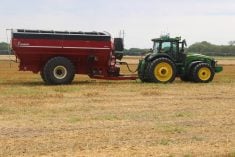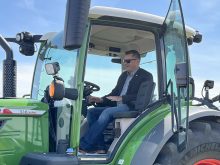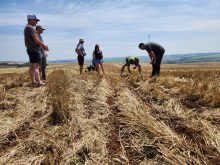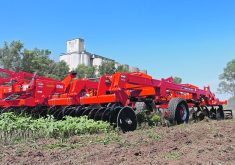Alberta researchers study the potential benefits of combining strip tillage with precision planting in canola fields
Eliminating tillage in fields except where it counts could help prairie canola producers improve soil health while reducing wind and water erosion, says a scientist in Alberta.
Strip tillage combined with precision planting is being studied on crops grown at Farming Smarter’s research fields just outside Lethbridge, said research technician Carlo Van Herk.
“It’s a new practice and farmers can be stubborn, right?” he said.
“It’s tough to always change like, ‘oh, this is how my grandpa has been doing it, that’s how my dad did it, so that’s how I’m going to do it.’ But being open to change has very good benefits.”
Read Also
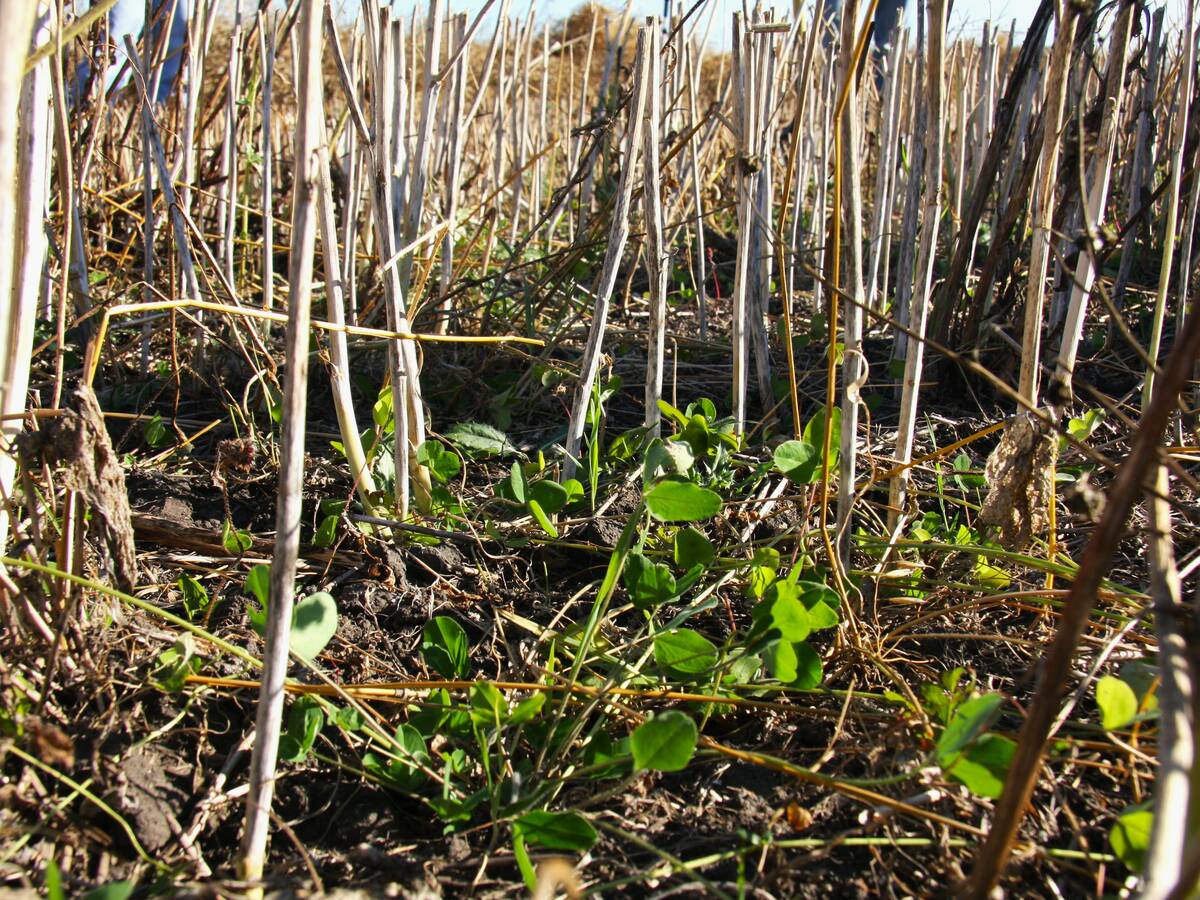
Saskatchewan project sees intercrop, cover crop benefit
An Indigenous-led Living Lab has been researching regenerative techniques is encouraging producers to consider incorporating intercrops and cover crops with their rotations.
Farming Smarter is an Alberta-based organization that seeks to bridge the gap between scientists and producers by testing new practices or crops and sharing what it has learned with farmers. It includes a three-year research project on the effect of strip tillage and precision planting of canola that was launched in 2021 with Lethbridge College.
Strip tillage only disturbs soil containing the seed rows, potentially helping producers by combining the benefits of two diametrically opposed approaches to farming: full tillage and zero till, said Van Herk, who is leading the project.
Although strip tillage is new to most farmers in southern Alberta, it has been adopted by bean and corn producers in American states such as Iowa, he said.
“It’s really something that has been going on for a long time,” he said.
“We can hopefully avoid a lot more of the blowing soils and adverse effects we’ve seen from cultivating so much soil.”
Fully tilling a field makes it more vulnerable to wind erosion, which is becoming an increasing problem for irrigated farms in southern Alberta, he said. It also diminishes the health of soil and decreases its productivity by destroying the habitats of beneficial organisms that live underground, he added.
“However, the benefit is we have better soil-to-seed contact, and it creates a little more friendly environment for the seed, whereas in no-till where we don’t disturb the soil at all before we seed, it protects your soil health and protects it from wind erosion,” said Van Herk.
“You don’t have those dust clouds that you see in the spring or in the fall. However, getting a good soil-to-seed contact is tougher in that situation, so you don’t have as good emergence.”
Strip tillage potentially offers canola producers an option that is in-between the two extremes, helping their crops enjoy the best of both worlds, he said. Only small portions of the soil are tilled “so we have a very good seed row for the plants, but then we also don’t till beside the seed rows so that the soil is still protected there, it’s not going to blow as much, and we’ll have better soil productivity.”
He said much of these benefits are due to the standing stubble between the rows.
“You’re going to have that extra seedling protection … and you’ll be protected from water erosion as well.”
Researchers used equipment such as Monosem precision planters, which allow exact placement of seeds within the rows. That’s in stark contrast with the more scattered results from conventional box drill seeders, said Van Herk.
Precision planters are used by southern Alberta growers of seed canola, which is an important crop in the area, he said.
Such equipment can divide the rows or bays between male and female plants, he said.
“Let’s say you have a planter that’s 20 rows wide, and you need four of them to be your male bays and you want the other 16 to be your females. You can just have the 16 set to female seed and the other four set with your male seed.”
However, precision planters have also been tested by Farming Smarter on a variety of crops during the last four or five years, said Van Herk.
“And we have done that and we have been showing yield improvements — emergence improved, everything has been improved by using precision planters.”
Farming Smarter was formed as a grassroots organization led by producers in 2012. More than 65 people from as far away as Saskatchewan attended its recent Field School at its main hub and research facility just east of Lethbridge.
They listened to a range of experts talk on site about their research.
“It’s an opportunity for us to learn from them, and all the challenges that they have and all the interests that they have, and at the same time an opportunity to share the projects that we’re working on,” said executive director Ken Coles.
Van Herk cautioned that the final results of his research team must be written up this upcoming winter to meet a deadline of March 31. However, precision planting has been showing better results compared to other seeding methods, including quicker canopy closure and better yields, he said.
“It’s been shown to flower a day earlier, which doesn’t seem like much, but in every year so far it has been flowering earlier than the other seeding methods have been. If we go into the tillage methods, where we have a full till, strip till and no till, we’ve been finding that the strip till is really just that middle ground.”
Compared to full tillage, where the soil warms up quickly but also rapidly dries out, or no till, where the soil doesn’t warm as fast but holds moisture much longer, strip tillage has been shown to be in-between both practices, he said.
“It doesn’t warm up as quick, but it also warms up quick enough. It doesn’t dry out too quick, but also still holds some moisture.”
Strip tillage hasn’t statistically been shown to have an advantage for yields, said Van Herk. The project also didn’t include sampling for soil health, but decades of previous research have shown that no tillage is better than full tillage, he added.
The important thing is that strip tillage is not decreasing yields because it likely helps soil health compared to full tillage, “which might give you a good yield, but is not as good for your soil health,” he said.
“Strip tillage just seemed like more of the answer.”
Seed canola in particular has always used tillage system because it eliminates the possibility of volunteer canola or plants from previous years appearing in the new crop, “as then it really wrecks the seed of the field,” said Van Herk.
“It can be it’s a different variety, or it could even have lots of different genetic traits, so you don’t want that plant to be mixing with all the other plants.”
However, the problem could potentially be solved with strip tillage by following practices such as longer rotation, he said.
“There’s definitely opportunities for that, yes.”
Farming Smarter recently launched its Saving Soils research project. The five-year initiative will test and promote practices aimed at improving the productivity and sustainability of crop production systems in areas such as southern Alberta.
The region contains nearly 1.8 million acres of irrigated land that includes seed canola production.
“And I think the adoption of zero tillage has been much less there because moisture isn’t as limiting, and of course we have these root crops that actually require tillage, things like potatoes and sugar beets,” said Coles during an earlier interview.
Stronger, more intense winds and drier winters are resulting in increasing wind erosion, he said.
Van Herk said all it takes is one bad windstorm in an area where semi-trucks have occasionally been blown over on roads such as Highway 2 and Highway 22.
“I have seen ditches that tend to be a metre-and-a-half deep and they are level with the road because they are so full of soil. And I’ve seen canals as well having filled up, irrigation canals; they’ve had so much topsoil being blown into them, they’ve had to redig them in the spring.”
It is vital to help canola farmers find ways to maintain their topsoil, he said.
“Topsoil is the gold on the farms.… That’s the most important layer in the field, so everything we can do to protect that is valuable.”




